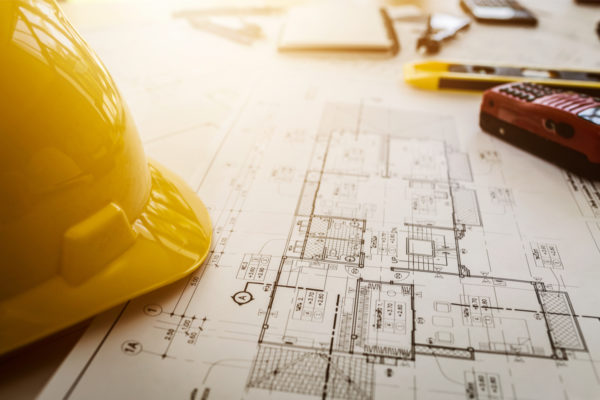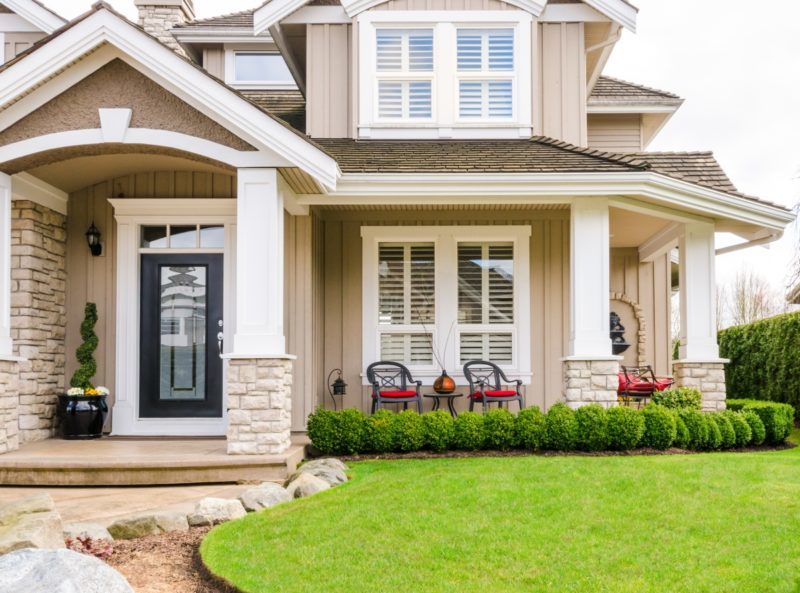Home Construction Safety Tips
Reduce The Risk Of An At-Home Construction Project Accident With These Safety Tips
A survey by the National Safety Council revealed that 26 percent of homeowners who completed a DIY home improvement project experienced some type of injury to themselves or someone else in their household. We have to wonder, were they taking the correct safety precautions in order to avoid these accidents?
With the National Center for Health Statistics identifying accidental injury as the third highest cause of death in the US–accidental injury is not a risk that should be taken lightly. With the rate of accidental injuries increasing every year, it’s more important now than ever before to take steps that ensure the safety of you and the people around you.
Taking basic steps towards safety can significantly reduce the risk of an accident (or worse) occurring during an at home construction project, DIY project, or home improvement renovation. Check out our home construction safety tips:
Know How Each Piece Of Equipment You’re Using Works
Read over the manual on each piece of equipment you plan to use for your project. This is especially important for power equipment, which when used incorrectly can lead to serious accidents.
TIP: Check YouTube for a visual tutorial on how a piece of equipment works and its safety features.
Be On The Look-Out For Misplaced Objects
Tools and other materials left unsecured are accidents waiting to happen. Frequently, tools and other objects left on top of ladders, set on framing, or left unattended on roofs are the culprits behind falling object injuries. Tools and other building materials left on the ground can lead to falls or punctured feet.
TIP: Pay attention to how often you leave tools and objects lying around. We think you’ll see it happens quite frequently.
Minimize Your Chances Of A Back Injury
Back injuries are very common on many types of construction sites–even at home, in the backyard, or in your garage.
TIPS:
- Do not lift more than you can handle. When a load is too heavy, ask for help.
- Keep your back straight, knees bent and the load close to your body when lifting to minimize strain on the back.
- Lift with your legs, not with your back.
- Never twist your body when carrying a heavy load. Think about pivoting your feet and not your spine.
- Make sure your paths are clear of hazards that might cause you to trip, slip, or fall.
Practice Ladder Safety
Of the almost 500,000 falls from ladders that occur annually, 97 percent occur at home. For such a useful piece of equipment, ladders can certainly be dangerous. Luckily, you can avoid most accidents with some good ladder safety techniques–and a little common sense.
TIPS:
- Face the ladder while climbing it.
- Always carry tools in your toolbelt holster or pouch–not in your hands.
- Always maintain three points of contact while climbing (one hand and two feet or two hands and one foot).
- Set the ladder on a firm and level base.
- If you must place your ladder in front of a door, make sure it is locked.
- Make sure the ladder you use is the right height for your job.
- Remember, the top two steps are not the safest place to stand.
- Fully open stepladders and lock spreaders in place.
- Use ladders with non-slip feet.
Wear The Necessary Safety Gear
Of the 26 percent of homeowners who admitted to injuries from their DIY home projects, 41 percent said their injuries were the result of not wearing protective gear. Protective gear can prevent your body from a number of injuries:
- Safety helmets: Protect your head from falling objects by properly wearing a good quality hard hat. When the hard hat is not on your head, be sure to take good care of it. Never leave it in the window of your car as sunlight can weaken its strength and cause damage.
- Eye protection: Protect your eyes from dust and other damaging particles with full-cup, side shielding, shatterproof safety eye protection. Avoid wearing contact lenses on the job site as chemicals, gases, or dust may get under them and cause irritation or even damage to the eyes.
- Ear protection: Protect your sensitive ears from loud and repetitive noises. There is no cure for hearing loss so take precautions to avoid damage.
- Safety footwear: Keep your feet safe from falling objects, crushing hazards or punctures from sharp objects with steel-toed safety boots.
- Knee pads: Avoid “bad knees” with a pair of knee pads.
- Safety gloves: Look after your fingers with a high-quality pair of gloves.
- High visibility vest: Be sure you’re seen especially on sites that aren’t lit well or where you could potentially blend into your surroundings.
Check The Health Hazards
Eliminate the risk of accidentally poisoning yourself and others by keeping chemicals like paint thinners and corrosive cleaners out of reach. Make sure chemicals and cleaners are tightly sealed, and only use when wearing protective gear (like goggles, work gloves, and a ventilation mask).
Whenever you get started on a maintenance or restoration project, check to see if the home or area you’re working on has a history of hazards such as led or asbestos.
Know When To Ask For Help From A Professional
Just because you can complete a DIY project doesn’t mean you should. Leave the dangerous and risky projects to the professionals. Professionals have the equipment, experience, and safety protocols to get a project done the right way and accident-free.
Make Safety A Priority When Dealing With Concrete
Contact with wet concrete can cause skin irritation, severe chemical burns, and serious eye damage. Skin exposure to concrete may be associated with allergic contact dermatitis.
TIPS:
- Wear waterproof gloves, a long-sleeved shirt, full-length pants, and proper eye protection when working with concrete.
- If you must stand in wet concrete, wear waterproof boots that are high enough to keep concrete from getting into them.
- Wash any concrete, mortar, cement, or cement mixtures from your skin immediately.
- Flush your eyes with water immediately after contact and see medical attention if necessary.
- Take indirect contact, like through clothing, seriously–often it can be just as damaging as direct contact.
Have a DIY concrete project you’re planning to start soon? First, check out our handling and storage safety data sheet.
Then head over to our Get The Best Ready Mix For Your Project Concrete Checklist which contains expert advice on how to make your next concrete order process easier and faster, a PSI Index to gauge the strength needed for your next concrete project, and a step-by-step guide to walk you through considering need-to-know features like consistency and durability.


